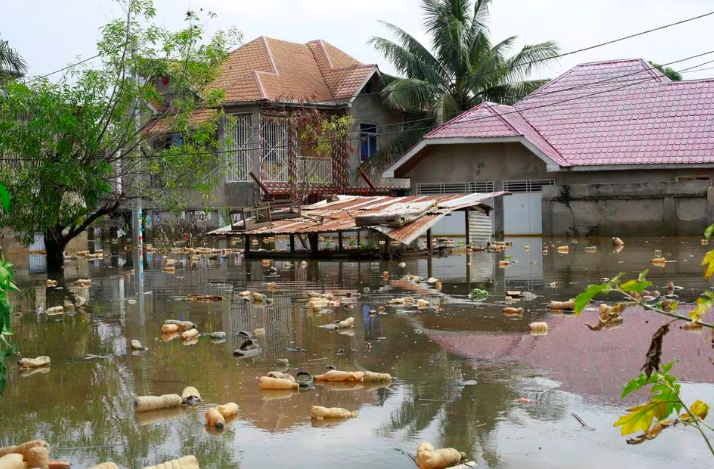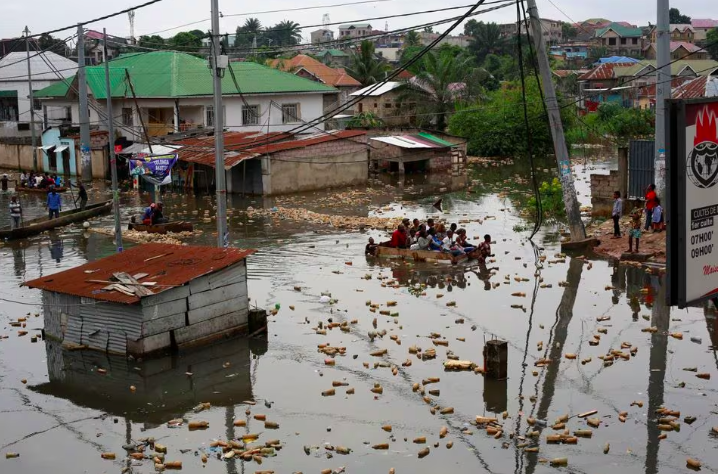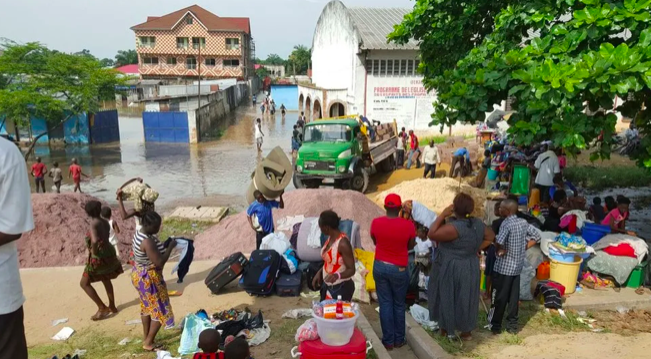By Gabs Mia
Kinshasa, DRC: Rising to its highest level in over six decades, the mighty Congo River has unleashed catastrophic flooding upon the Democratic Republic of Congo (DRC) and Congo Republic, resulting in the tragic loss of over 300 lives in recent months, as reported by Reuters.
This vital river, which serves as a crucial lifeline for many communities, has transformed into a relentless force of nature, bringing forth the worst flooding disaster in six decades
The staggering toll on human lives, the damage to infrastructure, and the unprecedented extent of displacement have not only instilled shock and devastation in the hearts of the nation but have also cast a spotlight on the pressing need for urgent and extensive aid to alleviate the suffering.

Speaking to Talk Africa, the Minister of Public Health, Hygiene, and Prevention, Samuel Roger Kamba Mulamba, paints a grim picture of the devastation. Lives have been tragically lost, with 221 people succumbing to the merciless floods, and another 625 individuals left injured. Human suffering extends further as 282,665 households face the harsh reality of displacement and uncertainty.
The impact on infrastructure is staggering, with essential elements of daily life crumbling under the force of nature. Tens of thousands of homes, schools, healthcare facilities, markets, and roads have suffered significant damage. The provinces of Equateur, Sud-Ubangi, Kinshasa, and Tshopo find themselves grappling with the aftermath, bearing the brunt of this unforgiving calamity.
Geographically, the floods spanned a vast area, affecting 72 regions across 16 provinces from November 2023 to January 2024. Equateur, Sud-Ubangi, Kinshasa, and Tshopo emerge as the hardest-hit regions, facing the colossal challenge of rebuilding and recovering.

In the capital city, Kinshasa, neighborhoods are submerged, their streets transformed into waterlogged expansion areas due to the rising levels of the Congo River and nearby waterways.
The Mososo and Ndanu neighborhoods in the Limete commune, along with the Bitshakutshaku neighborhood in Barumbu, stand as testaments to the devastating impact on urban areas.
Climatic upheavals were observed through the rising waters of the Congo River which caused large areas of flooding in certain western provinces (Tshopo and Tshuapa) where villages and neighborhoods were submerged. Several thousand hectares of crops were destroyed reported Relief Web.

Landslides have added another layer of complexity to the disaster, striking regions like Bukavu, Kamituga (South Kivu), Kananga (Kasaï-Central), Kamonia (Kasaï), and Matadi (Kongo-Central).
The risk assessment is grim, with 16 out of the country’s 26 provinces remaining at heightened risk, underscoring the need for immediate and strategic interventions to prevent further loss of life.
Despite the severity of the situation, affected communities find themselves waiting for government aid, their resilience being tested in the face of adversity.
Urgent calls for swift action and international support resonate as hopes remain high that relief and assistance will reach those in need during this challenging time.
The Congolese people, united in their struggle, yearn for the strength to rebuild their lives and communities from the ruins left behind by the relentless floodwaters.














